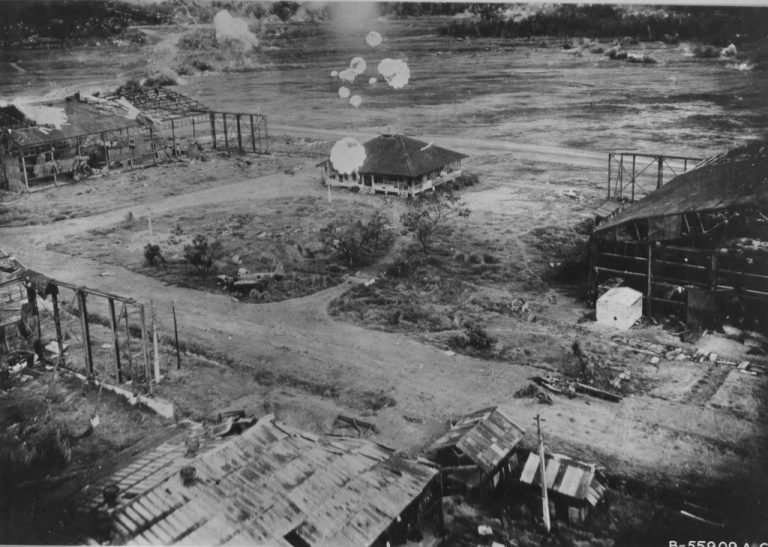The Town of Angels II: WW2 and Now
Holding the Seat of Power
In 1899, Angeles grew to prominence as it was made the seat of the Philippine Government by General Emilio Aguinaldo. It was here that the first-anniversary celebration of Philippine Independence was held after its proclamation a year earlier in Kawit, Cavite. However, the city's time in the political spotlight was abruptly cut in just two months when General Emilio Aguinaldo had to move and transfer the government's center to Tarlac following the occupation of American forces.
U.S. Military Encampment
In January 1900, General Frederick D. Grant organized the first U.S. Civil Government in Angeles by appointing an alcalde or municipal mayor. This started the American presence in Angeles highlighted by the encampment of the U.S. military forces in the area from 1902 until 1991. Barrio Talimundoc (now Lourdes Sur) became the site of the first U.S. Army camp.
The Beginnings of Clark Airbase
A year after Barrio Talimundoc was declared the first U.S. army camp, then U.S. President Theodore Roosevelt signed an executive order designating 7,700 acres (31 sq. km.) of land in Barrio Sapang Bato as Fort Stotsenberg. The land area would, later on, expand to 156,204 acres (632.14 sq. km.) in 1908 to become Clark Air Base.
In 1919, the skies of Angeles City welcomed military planes (DH4s) which had come from the airfield in Clark.
World War 2
As Angeles is host to the base, the town witnessed what historians consider one of the most destructive air raids of World War II. In December 8, 1941, Japanese warplanes dropped their bombs on Clark Field and Angeles destroying almost all American warplanes, and debilitating America's air power in the Far East.
With American military power crippled, Japanese troops entered Angeles in the early morning of New Year's Day of 1942, occupied the town for three years up to January 1945, and took control of Fort Stotsenberg.
Filipino and American soldiers who were in the historic Bataan Death March on April 10, 1942, passed through Angeles en route to a camp in O'Donnell, Capas, Tarlac.
 |
| Parachute bombs falling on Clark Field circa 1941 |
Post-War Period
After World War II and following the declaration of Philippine Independence on July 4, 1946 the Philippine-American Military Bases Agreement was signed in March 14, 1947, allowing the U.S. to maintain territorial integrity and sovereignty over Clark Air Base and Subic Naval Base for the next 44 years. Clark, now occupying 63,103 hectares, served as the tactical operational U.S. air force installation in the entire Southeast Asian region with a capacity to accommodate all the U.S. military transport planes serving the entire Western Pacific.
Clark's renaissance had Angeles serving as home to a now bigger colony of expatriates as many Americans chose to settle in the town, particularly in the Balibago district.
Angeles grew to new heights as a town after the war. Then, on January 1, 1964, it was inaugurated as a chartered city under Republic Act 3700 through the efforts of then-Mayor Rafael del Rosario.
Surviving Calamities in Recent Memory
- Over the years of its history, Angeles not just transcended not only war but natural calamities of various kinds. On October 7, 1871, a strong typhoon destroyed hundreds of houses and thousands of colorful lanterns and paper castles that were made for the feast of "La Naval" and "Fiesta ng Apo".
- In 1918, the town went through an influenza epidemic that took a heavy toll on lives. It was said the epidemic claimed lives by the minute that the dead were just dumped on carts and buried en masse.
- In 1972, the whole province of Pampanga was submerged in a deluge almost Biblical in magnitude after 40 days of torrential rains. Angeles City lying at a relatively high altitude was saved from this but still suffered destruction to properties when rampaging rainwaters scoured the banks of the Abacan River and the Sapang Balen Creek, bringing down with it both private and public infrastructures, like houses and school buildings, bridges, etc.
- In 1991, the resilience of the Angeleños was put to a test again during the eruption of Mount Pinatubo. The beautiful mushroom-like ash cloud it spewed on June 12, 1991 didn't. portend the dire things yet to come.
- Angeles was not also spared from Mt. Pinatubo's wrath when it erupted on June 12 and 15 in 1991. The volcano's massive explosion and subsequent heavy ashfalls and mudflows destroyed properties, claimed lives and displaced thousands of families. It also took a heavy toll on Clark Air Base as it diminished its utility, which consequently led to the U.S. Air Force abandoning the base and prematurely ending U.S. military presence in the city.
THE NOW
Angeles suffered a downturn in its economy for a while. Yet, this would not be for long because soon as the city had done its rebuilding and the revival of Clark, this time as an economic zone, by the national government, the city's luster sprung back to life. But, while it has already passed through turbulence, the city continues to face the challenges of development and time.
- http://region3.dilg.gov.ph/zambales/index.php/80-lgu-infos/pampanga-infos/511-angeles-city-profile
- https://philippinescities.com/angeles-city-pampanga/#:~:text=Angeles%20City%2C%20before%20it%20was,place%20were%20the%20Negrito%20Tribesman.


Comments
Post a Comment